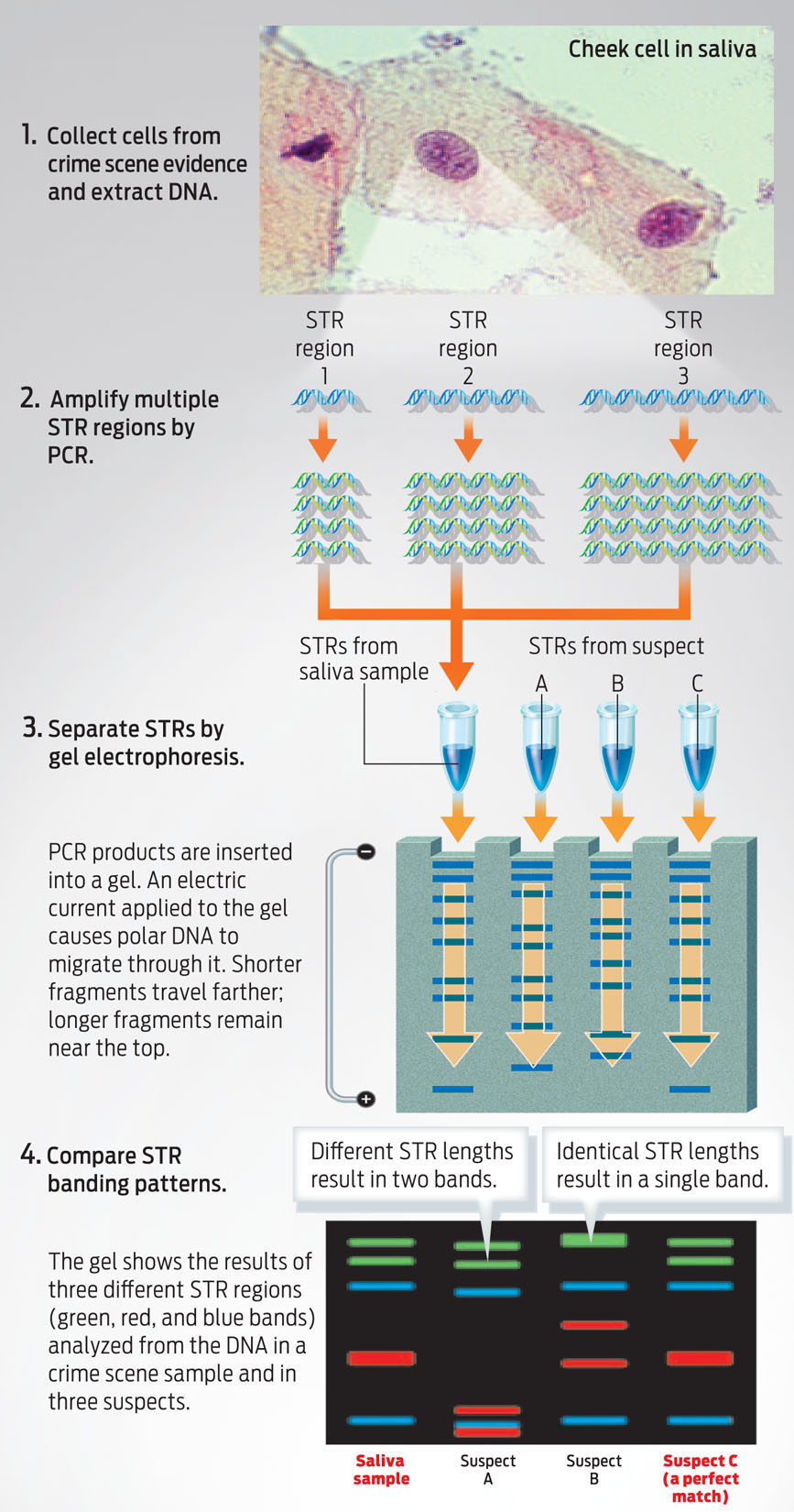DNA PROFILING: HOW IT WORKS
GENOME One complete set of genetic instructions encoded in the DNA of an organism.
Once DNA from crime scene evidence is obtained, the next step is to analyze it. Human cells contain vast amounts of DNA—there are on the order of 3 billion nucleotide base pairs contained within the full stretch of the human genome Figuring out the sequence of every nucleotide in the genome would be extremely time consuming and expensive. So instead, forensic scientists use a shortcut—they employ PCR to amplify specific segments of DNA and analyze just these segments. These segments are known as short tandem repeats.
146
Human cells contain vast amounts of DNA—there are on the order of 3 billion nucleotide base pairs contained within the full stretch of the human genome.
147
SHORT TANDEM REPEATS (STRs) Sections of a chromosome in which DNA sequences are repeated.
Short tandem repeats (STRs) are blocks of repeated DNA sequences found at points along our chromosomes. These sequences are noncoding: they do not contain instructions for making proteins. They are a bit like nonsense words in our DNA: the sequence AGCT repeated over and over again, for example. While all of us have STRs in the same places along our chromosomes, the exact length of each STR varies from person to person. At a single STR site, one person may carry the AGCT sequence repeated six times while another person might carry the AGCT sequence repeated four times. Also, since we inherit two copies of every chromosome, every person has two copies of each STR, and they can be of two different lengths—four repeats of AGCT on one chromosome and six repeats of AGCT on the other chromosome, for example. Forensic scientists use these differences in STR lengths to distinguish between individuals (INFOGRAPHIC 7.5).
No two people have the same exact nucleotide sequence. The specific regions of DNA that forensic scientists analyze are those that contain short tandem repeats (STRs). STRs are short stretches of repeated DNA sequences. People differ in the number of copies of an STR sequence found along their chromosomes.

GEL ELECTROPHORESIS A laboratory technique that separates fragments of DNA by size.
To create a DNA profile, scientists first employ PCR to increase the amount of DNA at multiple STR regions. Then they use a method called gel electrophoresis to separate the replicated STRs according to length. Shorter STRs—those with fewer numbers of repeats—are smaller and travel farther in the gel; longer ones do not travel as far. When visualized with a detection technique known as fluorescence (the same kind of light released from glowing jellyfish), the separated segments of DNA create a specific pattern of bands that is unique to each person. This pattern is a person’s DNA profile. Scientists can then compare band patterns of DNA from a crime scene to DNA from a suspect. DNA profiles have other applications, too—paternity or ancestry testing, for example (INFOGRAPHIC 7.6).

148
Judges can be fooled and juries make mistakes, [but] when it comes to DNA testing there’s no mistakes.
—ROY BROWN